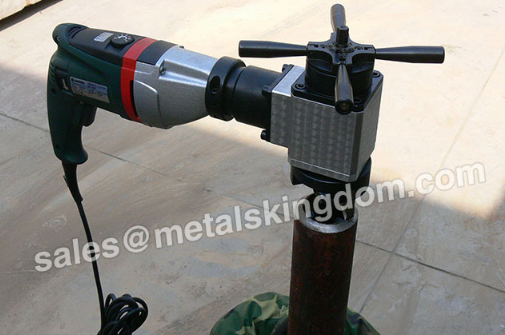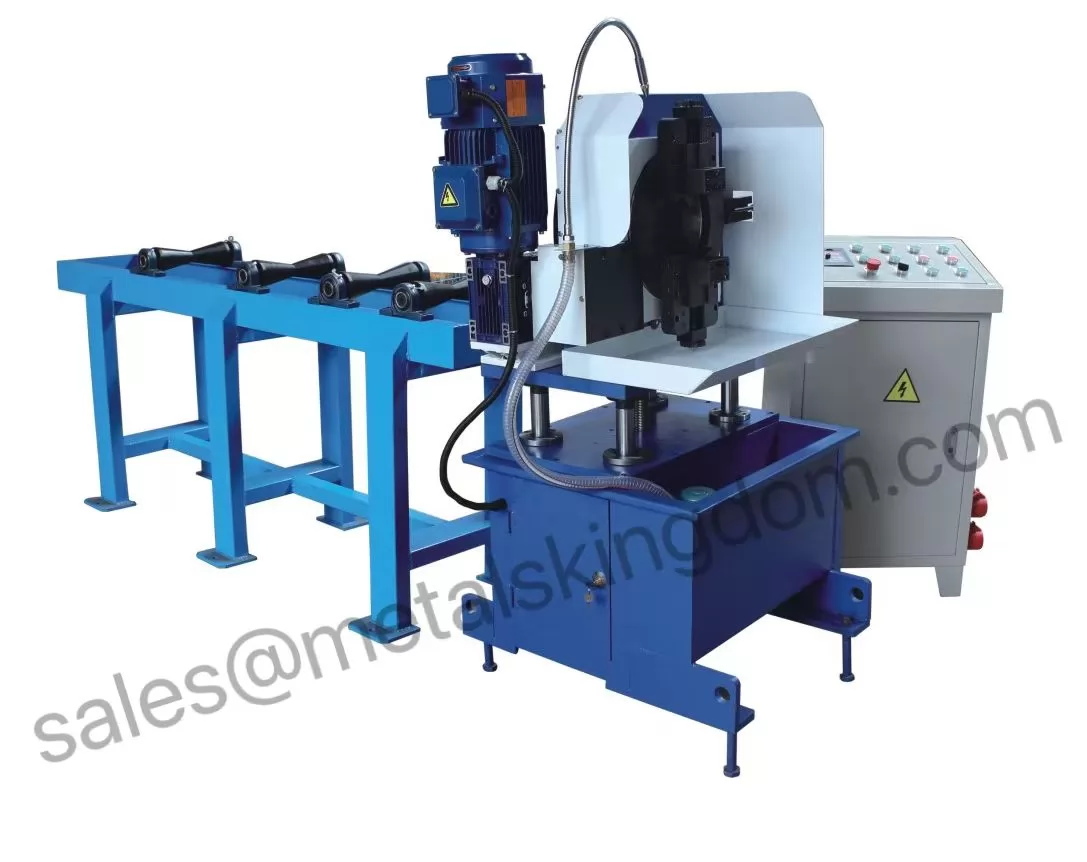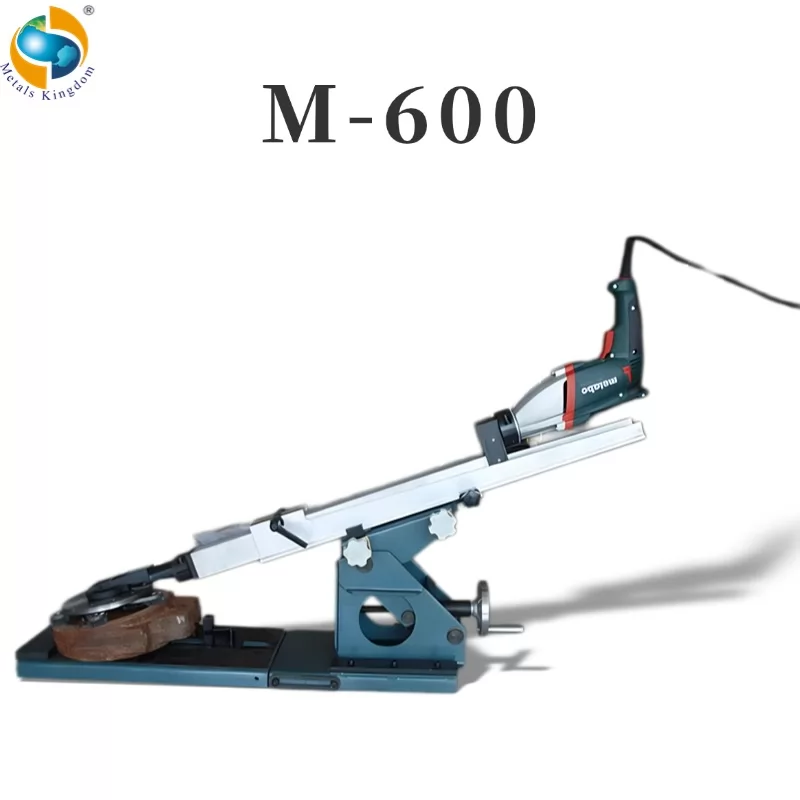Pipe beveling is the process of forming an angle between the finished edge of the pipe or pipeline and the plane perpendicular to the surface of the pipe. The standard welded pipe bevel angle is 37.5 degrees. Various other angles and unique forms, such as J-Bevels, can also create finished pipes or use automatic pipe beveling equipment.
For firms trying to improve manufacturing or avoid inconvenience and time of hand beveling, the pipe beveling machine is an excellent solution.
Why bevel a pipe?
Beveling pipes or tubes are most commonly used to prepare the ends for welding. It can also be used for safety and visual factors at the end of the deburring cutting.
Why do companies need to automate pipeline beveling?
ㆍSave time-pipe beveling machinery is sometimes faster than various other methods, such as manual grinding, flame-cutting, hand-held beveling, or filling into the turret.
ㆍSay goodbye to unclean procedures such as hand sanding or incineration.
ㆍRegular and accurate pipe bevel angles will be processed every time, and the pipe square and bevel or deburring ID will be processed according to the requirements.
ㆍArrays with cycle times generally between 5 and 20 seconds depending on the dimension.
ㆍEliminate ergonomics issues from manual tools for driver management.
ㆍIt is much safer than manual grinding or incineration. All chips are made up of the inside of the machine.
ㆍLow operating costs, mainly using typical carbide molds on the market.
ㆍIt is easy to tilt to stainless steel and products that are not suitable for burning.
ㆍSpecial types such as j-shaped slopes can be easily created.
ㆍIt can be operated by an unskilled driver immediately after the arrangement.
ㆍThe automated pipe bevel device will certainly provide a safer, more accurate, and more repeatable pipe bevel than any manual method.

Pipe Beveling Machine
What is Pipe Beveling?
Pipe beveling is an angle forming between the edge of the end of a pipe or tube. When the pipe end is formed with a certain degree of an angle, it is called a bevel end or beveled end. Pipe beveling is an essential step in the welding preparation process of pipe joining. The quality of the beveled pipe directly affects the quality of the welding, so that proper pipe preparation ensures the best possible weld joint. Other than welding, beveling can also be used for deburring the cut pipe ends for aesthetic and safety reasons.
What is correct, beveling, or bevelling?
Both beveling and bevelling are correct. 'Pipe bevelling' is the English UK spelling and 'pipe beveling' is the English US. Also, the wording pipe chamfering, pipe end working, pipe end preparation, and pipe prepping are other common terms for this application method.
Beveling VS. Chamfering: What is the difference?
Pipe chamfering is technically a type of pipe beveling. Both terms refer to an edge forming between two faces of a pipe or tube. However, the main difference between pipe chamfering and pipe beveling is that a chamfer is an edge that connects two faces at a 45 degrees angle, whereas the bevel's slope can be any angle except 45 or 90 degrees.
How to Bevel a Pipe?
There are various ways to bevel a pipe. Using a portable or stationary beveling machines, doing it by a hand grinder, or by a plasma or torch cutter.
The hand grinding method of pipe beveling is the cheapest and the most dangerous method compared to using a pipe beveling machine. It is time-consuming, and a skilled operator is required to perform a bevel on a pipe by a hand grinder. Moreover, it is nearly impossible to keep the bevel quality the same for each pipe operation while creating a lot of mess.
Using a torch or plasma cutter is another type of pipe end preparation machine. It provides faster results compared to a hand grinder, however; it also has some drawbacks. The flat land at the end of the pipe needs to prepared by hand, which is not a safe process. Yet again, the command produced will be inconsistent.
Also, this pipe beveling method cannot be used on all materials, which would affect your flexibility in production.
A portable beveling machine comes in different configurations and is notably safer than the previous two methods. The biggest advantage of these portable machines is that they are portable so that it's time-efficient since the user can take the machine to the pipe. They are convenient to use for maintenance work, or on a construction site. However, they are inadequate to meet high production requirements.
Stationary beveling machines provide the most options and flexibility for pipe beveling. Almost all kinds of pipe bevel shapescan be created with different combinations of tools. They are designed to meet high production requirements in a safe working environment. Also, stationary pipe beveling machines are easy to integrate with automated production lines, so that the operator does not even have to be on the machine all the time. There are various benefits of stationary beveling machines such as; standard carbide cutting inserts are inexpensive to replace when needed, easy to set up and requires low maintenance, ensures the lowest cost and fastest cycle time per bevel, provides safe working environment without creating a mess, offers a broad range of machining options and can machine several pipe or tube materials, and does not require a skilled operator. Last but not least, stationary pipe beveling machines ensure constant pipe bevel quality that directly affects the quality of pipe welding.
We are pipe beveling machine suppliers. If you are interested in our products, please feel free to contact us.












